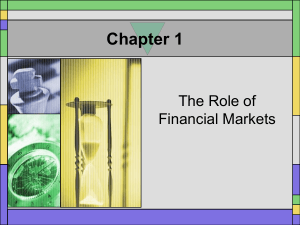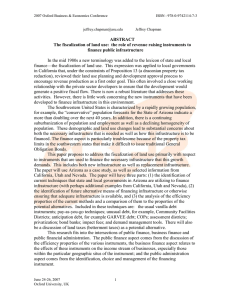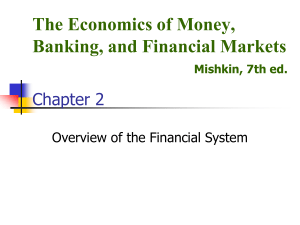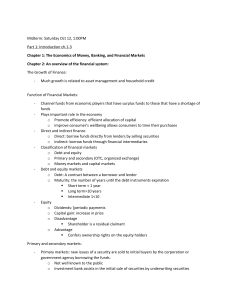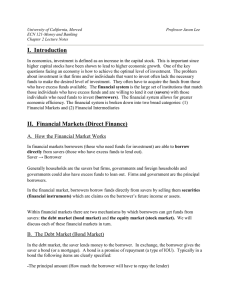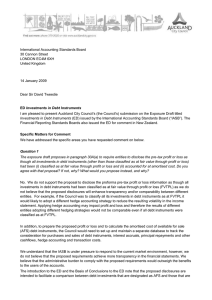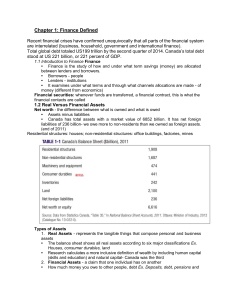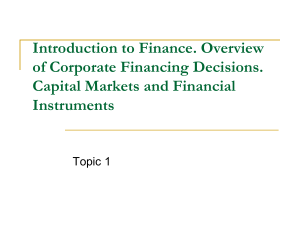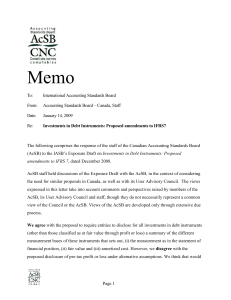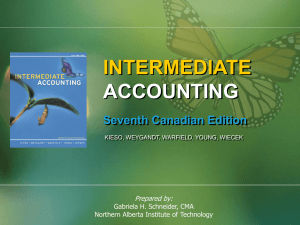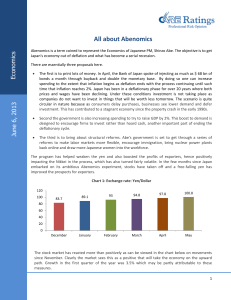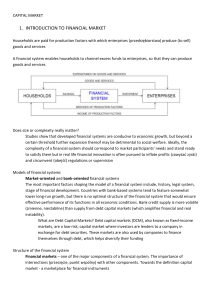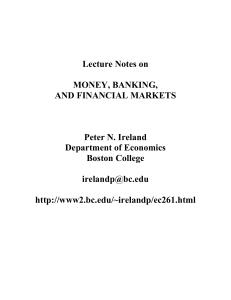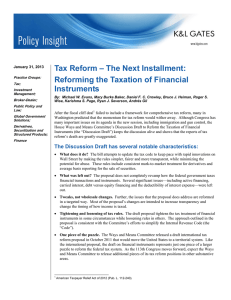A F 2XX DEBT MARKETS
advertisement
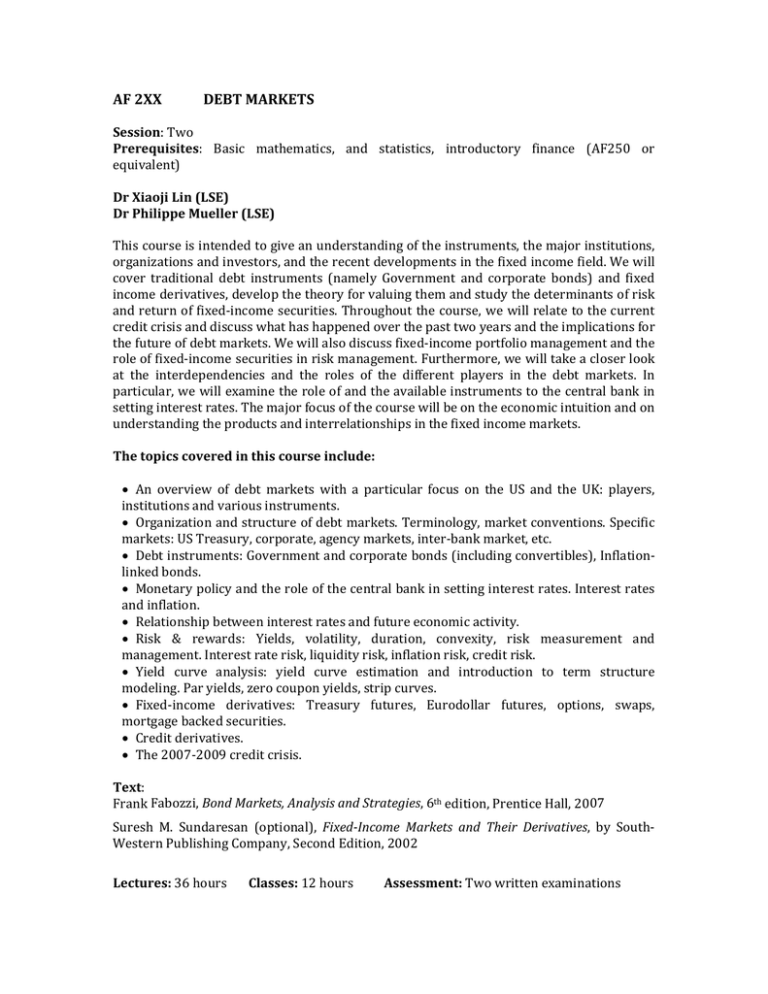
AF 2XX DEBT MARKETS Session: Two Prerequisites: Basic mathematics, and statistics, introductory finance (AF250 or equivalent) Dr Xiaoji Lin (LSE) Dr Philippe Mueller (LSE) This course is intended to give an understanding of the instruments, the major institutions, organizations and investors, and the recent developments in the fixed income field. We will cover traditional debt instruments (namely Government and corporate bonds) and fixed income derivatives, develop the theory for valuing them and study the determinants of risk and return of fixed‐income securities. Throughout the course, we will relate to the current credit crisis and discuss what has happened over the past two years and the implications for the future of debt markets. We will also discuss fixed‐income portfolio management and the role of fixed‐income securities in risk management. Furthermore, we will take a closer look at the interdependencies and the roles of the different players in the debt markets. In particular, we will examine the role of and the available instruments to the central bank in setting interest rates. The major focus of the course will be on the economic intuition and on understanding the products and interrelationships in the fixed income markets. The topics covered in this course include: An overview of debt markets with a particular focus on the US and the UK: players, institutions and various instruments. Organization and structure of debt markets. Terminology, market conventions. Specific markets: US Treasury, corporate, agency markets, inter‐bank market, etc. Debt instruments: Government and corporate bonds (including convertibles), Inflation‐ linked bonds. Monetary policy and the role of the central bank in setting interest rates. Interest rates and inflation. Relationship between interest rates and future economic activity. Risk & rewards: Yields, volatility, duration, convexity, risk measurement and management. Interest rate risk, liquidity risk, inflation risk, credit risk. Yield curve analysis: yield curve estimation and introduction to term structure modeling. Par yields, zero coupon yields, strip curves. Fixed‐income derivatives: Treasury futures, Eurodollar futures, options, swaps, mortgage backed securities. Credit derivatives. The 2007‐2009 credit crisis. Text: Frank Fabozzi, Bond Markets, Analysis and Strategies, 6th edition, Prentice Hall, 2007 Suresh M. Sundaresan (optional), Fixed­Income Markets and Their Derivatives, by South‐ Western Publishing Company, Second Edition, 2002 Lectures: 36 hours Classes: 12 hours Assessment: Two written examinations




